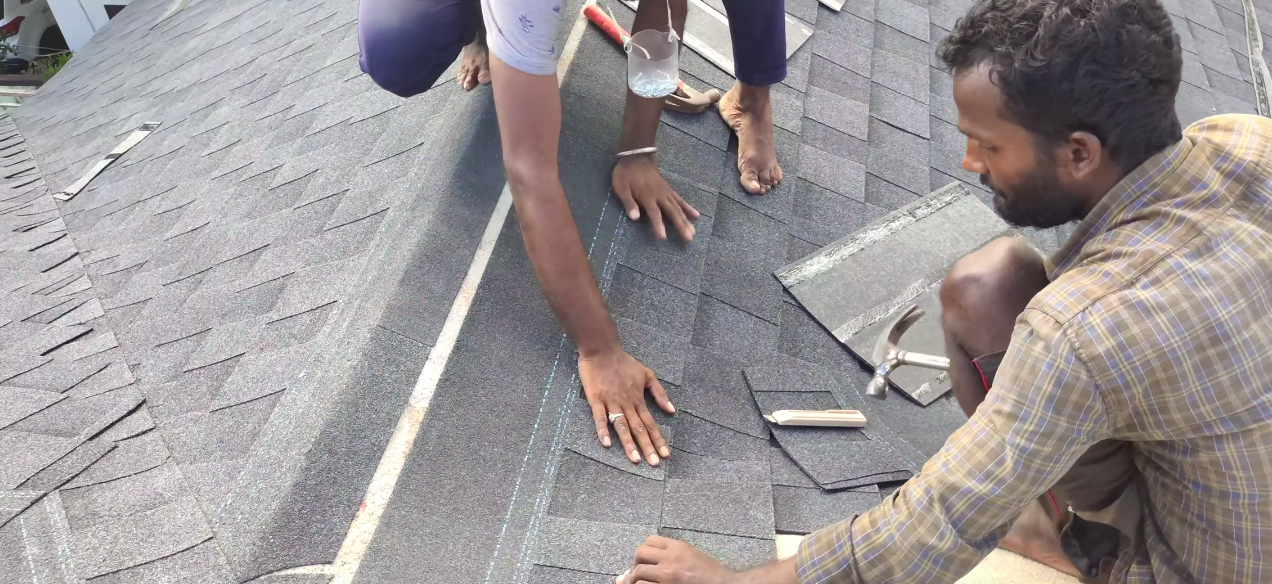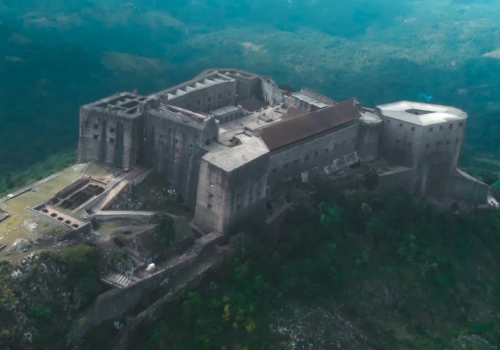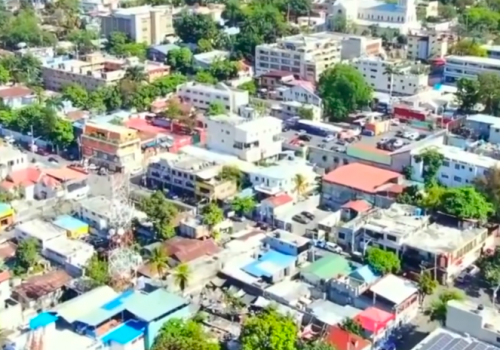Best Roof Type For Haiti Houses
The part of a house that is often exposed to solar radiation the most is the roof. In order to reduce the amount of heat that enters your home in hot tropical regions, choosing the correct roof is crucial.
An important component of any home or structure is the roof. Shelters in the tropics can function without walls, windows, doors, or even a floor. But a roof is necessary to provide shelter from the sun and rain protection.
It must therefore function well in its environment. In addition to a roof’s storm resistance, you should pick a design that limits exposure to solar heat. Additionally, having a roof that functions effectively in this kind of weather is important because many tropical places get heavy rainfall.
Following are some factors to take into account while selecting a roof for your house in a tropical climate.
Types of Roof
There are a variety of sizes, styles, and shapes for roofs. How effectively they function in tropical regions depends on their characteristics.
Roof is flat
A common feature of a contemporary modern home is a flat roof. They complement Modernism’s clear, uncluttered aesthetic beautifully.
To ensure that rainfall can drain off, these are not entirely level and do have some slope. However, occasionally this slope is insufficient to allow heavy precipitation to drain off quickly. Flat roofs can occasionally increase ponding in tropical areas with a lot of rain during the monsoon season and run the danger of leaking.
Flat roofs are therefore more suited to climates with little rainfall.
They may frequently wind up being lower than pitched roofs as well. As a result, there is less potential for heat to build up beneath the roof level. Consequently, closer to your area.
Pitched Roof
Pitched roofs are roofs with one or more sloping surfaces. Depending on the style, performance, or even the item’s resilience to strong winds, the pitch angle may change.
Tropical areas are where pitched roofs are most prevalent. They can be found in both traditional and modern-day dwellings in the tropics.
There are numerous variations on pitched roofs. Shed or lean-to, gable, and hip roofs are a few of the more well-liked architectural designs in tropical areas.
The various roof kinds perform in varied ways to your home’s functionality, style, and look, similar to the degree of pitch.
Shed or lean-to roofs typically feature one sloping surface that is attached to both a high and a low wall. They are easy to put together. As a result, they are typically less expensive than other pitched roofs. Lean-to roofs can also include high-level windows to ventilate the roof space because there is just one tall wall on the high side of the roof. Lean-to roofs are good at dispersing water, although they can be problematic in strong gusts.
A lean-to might be a little more distinctive and offer a more modern expression.
Roofs with gables have two sloping sides. The walls form a distinctive triangle shape at both ends. They are common in many areas and can give your property a more classic appearance. A gable roof’s center section has high ceilings that allow hot rising air to escape far from you and your family below. A vent can be installed on the gable end walls to allow the hot air to escape.
Hip Roofs are also admired and can feel rather conventional on their own. Of the three roofs listed, they have the most wind resistance due to their four sloping sides. Hip roofs, however, require a little more effort to vent. Since they lack any high-level walls, putting vents on the roof is necessary. If not installed properly, these vents may be a source of leakage.
Concrete Roof Structure
Concrete is used to make concrete roofs, as the name suggests. Precast or in-situ (also known as cast-in-place) concrete could be used for this kind of construction.
Precast concrete may not be as common in residential applications as in-situ concrete. It entails building formwork, plating steel rebar, and then filling the formwork with concrete. These roof slabs typically are flat because of the concrete pouring procedure. They are therefore vulnerable to the issues with flat roofs in areas with excessive rainfall that were previously addressed.
Framed Roof Structure
The typical components of a framed roof structure are framing members made of wood or metal. These could be trusses or individual members like rafters and purlins.
Trusses are structural framing systems that are prefabricated. Particularly in wider spans, they often have a higher strength. Additionally, factories allow for improved quality control during production. Additionally, site assembly takes much less time than rafters do.
Typically, wood components that are inclined form rafters. They can be found in lean-to roofs, spanning from wall to wall, or from a wall to a ridge board. On-site rafters are put together by a builder. They require more time to build on-site as a result.
Raffers are ideal for adding storage to your ceiling space since they provide a clear, open space. Additionally, you have greater space to create distinctive ceilings like trays or vaults.
Roof Coverings
The material that covers the roof’s structure or decking is known as the roof covering. Since it is the top layer, it is frequently the layer that is exposed to the tropics’ rain and sun the most.
There are numerous roof covering materials available in a variety of designs. As a result, they affect how your property looks while shielding you from the elements.
Here are some common roof materials that work well in tropical climates.
Metal Roofing
Tropical areas are known for having metal roofs. They are resilient to the harsh tropical weather, long-lasting, and economical.
They are also naturally water-resistant, thus unlike some other coverings, they frequently don’t need an additional water barrier.
Metal also heats up quickly and conducts heat well. Metal, on the other hand, also cools down rapidly and does not retain and release heat like a block of concrete would.
Galvanized steel, aluminum, copper, and other metals are among the materials used to make metal roof coverings. They also come in a variety of hues, fashions, and shapes. These consist of standing-seam and other panel kinds, as well as corrugated or profile sheets.
But remember that metals can corrode or rust. Therefore, use caution when selecting metal roofs in coastal areas with a lot of sea spray.
Terracotta Clay Roof Tiles
Additionally common in tropical and subtropical areas are terracotta clay tiles. They have a striking and lovely appearance because to their peculiar color.
They have a long lifespan and are strong. Additionally, terracotta roof tiles are made of clay, a natural substance. Consequently, these roof tiles have certain advantages for the environment.
Clay tiles, however, require an underlayment layer because they are not weatherproof by nature. Furthermore, they weigh more than certain other roof coverings. The roof framing structure might need to be stronger than with lighter roof coverings like metal because of the added weight.
Roof Shingles
Similar to tiles, shingles are separate components that overlap to form a covering. They are made of various materials. Asphalt, wood, metal, and plastic are a few of them.
Shingles often need a waterproofing layer, just as tiles. Strong winds, such as those that occur during a storm or hurricane, can commonly damage shingles. In strong gusts, individual parts may blow away. The roof is still watertight, though.
Solar Shingles
Solar shingles are becoming more popular, although not being as common as some of the other shingles or roof coverings previously mentioned. In essence, solar shingles are photovoltaic panels that have been designed to resemble standard roofing tiles. They are a part of a movement that aims to switch out conventional building materials with photovoltaic components that have been specially created.
The sun’s energy is captured and transformed into electrical energy.
Solar roof tiles now function and look significantly better thanks to companies like Tesla. As more renewable energy sources are used in homes and other structures, we may anticipate seeing this trend increase and evolve.
Natural Materials
Natural roofing materials like thatch and grass have long since lost favor in the design of modern tropical homes.
In their tropical environments, these materials fared admirably. They employed materials that were found locally and underwent little to no manufacture. They might have been more sustainable than any other product on the market because of these qualities. However, they do have a chance of leaking.
Natural roof coverings like thatch also breathe well and provide good insulation.
Tropical resorts frequently use this roof covering even though it is not common in contemporary domestic applications.
I’m not advocating that you construct your roof from thatch like older craftsman-style houses. However, I occasionally ponder whether we shouldn’t design houses that are more like the sweltering resorts we see and long to visit. These resorts’ architecture encourages all the positive aspects of living in a tropical paradise. They are open to views, views of nature, and luxuriant tropical foliage.




